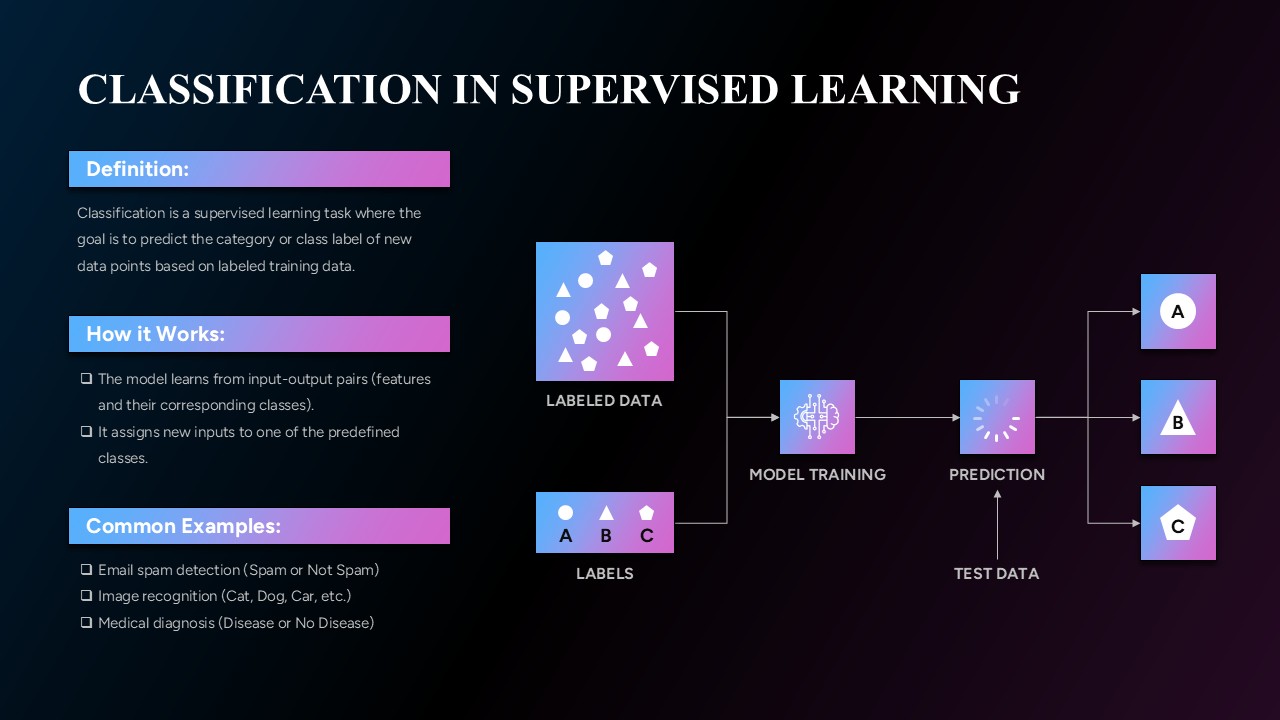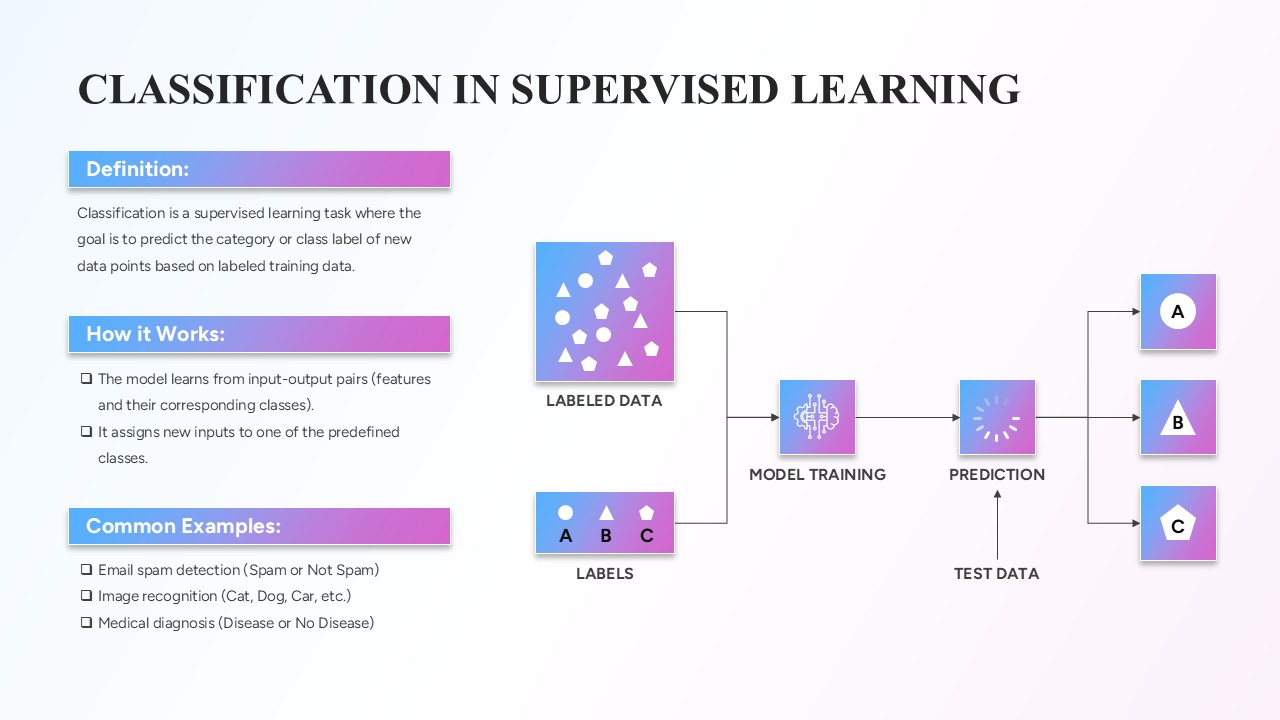Classification in Supervised Learning Template Dark


Description:
This dynamic slide illustrates the concept of classification in supervised learning, an essential machine learning technique used to categorize new data based on labeled training examples. The slide is divided into key sections, including the definition, process overview, and common use cases, such as email spam detection, image recognition, and medical diagnosis. The visual design leverages vibrant color gradients—blending blue and purple tones—to highlight different stages in the classification process, such as labeled data, model training, and prediction outcomes.
With simple yet effective icons representing various stages (labeled data, model training, and prediction), the slide clearly conveys how the model learns from input-output pairs and assigns predictions to new inputs. The model’s workflow, from training with labeled data to making predictions based on test data, is clearly outlined, offering a comprehensive and easy-to-understand presentation of the classification task in machine learning.
Ideal for educators, researchers, and AI professionals, this slide can be adapted for lectures, workshops, or presentations explaining supervised learning. It can also be repurposed for discussions on related topics such as artificial intelligence, deep learning, or data science workflows. Additionally, the minimalist design makes it a versatile slide for showcasing complex machine learning concepts in a clear and visually appealing manner.
Who is it for
This slide is perfect for AI researchers, data scientists, educators, and students seeking to explain or present the concept of classification in supervised learning. It is particularly useful for those involved in teaching machine learning, presenting academic research, or providing training on AI and data science applications.
Other Uses
This slide can be repurposed for a range of uses beyond machine learning, including presentations on general classification tasks in various fields, such as data analytics, decision-making models, and statistical analysis. It can also be used to explain similar processes in other types of AI models, such as clustering or regression analysis.
Login to download this file

















































